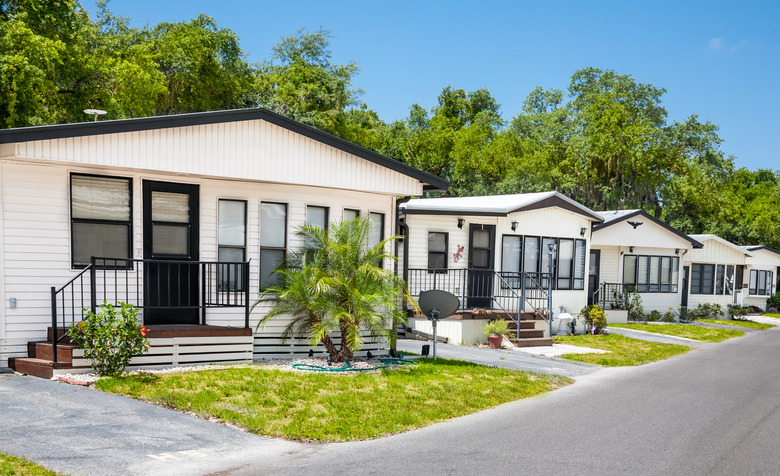Pier Vs. Slab Foundation For A Manufactured Home
In recent years, the quality of construction of mobile homes has improved, yet the cost to produce these homes represents a huge savings over the cost of building a standard "stick-framed" home. If your mobile home is being placed on your lot as a permanent residence, and you seek FHA financing, you may want an insulated slab foundation. If not, you can choose to have the home placed on a pier foundation. This method will require your county agent to inspect the job for compliance with county codes. If you are being financed with FHA, a registered engineer inspection on slab foundations is needed for compliance with FHA requirements.
Use of Insulated Slab Foundations
Use of Insulated Slab Foundations
If you intend to use an FHA loan to buy your manufactured home and land, you will need to have an insulated slab foundation installed prior to the home's delivery. This type of foundation is more costly than one consisting of just piers and tie-downs, but a slab will meet FHA's requirements and will fulfill the criteria for having the county tax your new property as real estate (another FHA requirement).
Insulated Slab Foundations Explained
Insulated Slab Foundations Explained
Insulated concrete slab foundation consists of a concrete pad, which may have surrounding drain tiles or another feature to help keep the ground dry underneath the pad. Water draining under the pad can cause the pad to move (or "float"). This movement would cause the pad not to meet FHA's requirements. Insulating the pad from water drainage ensures its stability. With no water drainage issues, the ground underneath the slab stays dry and warmer than surrounding areas in the cold months of the year. The home is set up on the concrete slab, and is supported by concrete block piers. Anchors are embedded in the concrete, and steel tie-down straps are wrapped around the home's support beams, then attached to the anchors.
Use of Pier Foundations
Use of Pier Foundations
If you are purchasing the mobile home with any loan except FHA (or for cash), a pier and ground anchor foundation may be used. This method of foundation is less expensive and time-consuming to construct than the slab foundation and is widely used all over the United States. Areas with soft ground soils, storms and high winds, and heavy snow affect installations, as additional anchors and tie-down straps may be required to secure the home to the ground.
Pier Foundations Explained
Pier Foundations Explained
A pier foundation employs steel jack stands or open-cell concrete blocks stacked up to the required height of the home's support beams underneath the home. These stacks of blocks sit on a concrete pad. Screw-in ground anchors are used to secure the home against the uplift of winds from storms. Steel straps wrapped around the home's support beams are attached to the ground anchors, which are screwed into concrete (at a depth below the area's frost line, the depth the ground freezes in a typical winter).
The number of straps and ground anchors required can vary depending on the local climate and the capacity of ground soils to securely hold the anchors. Areas of storm activity and winds (such as Florida) require more steel straps and anchors to secure the home safely to the ground.
Crawl Space Foundation
Crawl Space Foundation
The most secure foundation, and the best for FHA lending and "real property" conversion, is the crawl space foundation. This method combines concrete block underpinning around the perimeter of the home with internal, independent support points underneath. The home is tied down to ground anchors by steel straps attached to the perimeter support beams of the home. This method gives more resistance to the uplift of winds in storm areas. The design also gives a more "site-built" appearance to the outside of the home. Block piers are used underneath the home for support. This type foundation is more expensive to construct than the slab or pier foundation methods. There are no issues with drainage problems underneath the home since there is no concrete slab.
